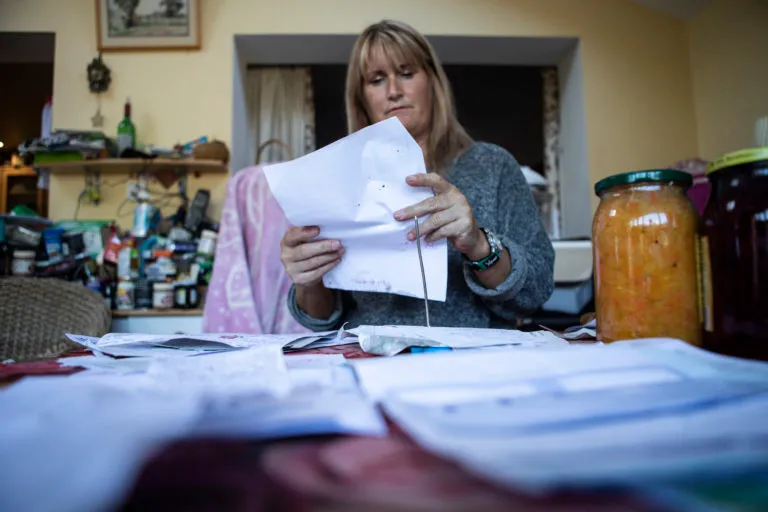Rising homelessness and struggling families: something has got to give
Published: by Tom Weekes

In our last post, the challenges that private renters in receipt of Local Housing Allowance (LHA) face in finding an affordable and decent home were laid out. This inability to access housing they can afford means that many people are forced to accept large shortfalls between their LHA and their rent in order to find a home.
Our research has found that nearly 42% of non-working LHA households face a monthly shortfall of over £100. This is a significant and unsustainable amount.
How are people coping with these shortfalls?
Bluntly, there is clear evidence that people aren’t coping; the LHA freeze has been linked to the steep rise in homelessness by the National Audit Office:
‘Changes to LHA are likely to have contributed to the affordability of tenancies for those on benefits and are an element of the increase in homelessness.‘
This is seen in practice in the rise in homelessness caused by the ending of an Assured Shorthold Tenancy (AST). An AST is the most common type of tenancy if you rent from a private landlord or letting agent. Homelessness caused by the ending of an AST increased by 66% between 2011/12, when the first changes to LHA were introduced, and 2017/18.
Homelessness occurs not simply when a family lose a settled home, but when they’re then unable to afford another suitable home. When families find themselves homeless because of the end of an AST, they may be placed into temporary accommodation. The total number of households living in temporary accommodation has risen dramatically[1], as has the length of time people spend in it[2]. People are unable to leave temporary accommodation due to the lack of genuinely affordable alternatives in the private sector and the chronic shortage of social housing.
Impossible and damaging trade-offs
At Shelter we see the impact of the LHA freeze not just on those who are already homeless, but also the much broader group who are at risk of becoming homeless. People present to our services every day who are threatened with homelessness as a direct result of large shortfalls between their LHA and their rent. They’ve tried everything to keep a roof over their heads, often cutting back on food, missing utility bills, and borrowing money from friends and family to pay for their rent.
When we see these people, we often refer them for food bank vouchers and specialist debt advice because of the long term challenges they have faced in to trying to manage these shortfalls. But these are not long term solutions. They have exhausted both formal and informal forms of borrowing, find themselves in significant amounts of debt and are on the brink of homelessness.
These are not unusual stories; our research with private renters in receipt of LHA across the country shows that in the last year:
- 31% had cut back on food for either themselves or their partner
- 37% had cut back on clothing for either themselves or their partner
- 37% had been forced to borrow money to pay for their rent.
It’s no wonder that most individuals (63%) in receipt of LHA say that they are either just about getting by or finding it difficult when asked about their financial situation. This is almost twice the level of private renters who do not receive LHA (33%)[3].
Poor conditions and lack of space
With LHA rates so low and shortfalls so high, the pool of suitable homes to access becomes smaller and smaller. When the choice becomes so restricted, to avoid homelessness people across the country are forced to live in overcrowded properties and in properties that are in an extremely poor state of repair. They simply cannot afford or access anything else. The impact on a child’s health and development from living in overcrowded properties or in poor conditions cannot be overstated.
Shelter has been concerned that those landlords who let to renters in receipt of LHA may rent out properties in poor condition to renters desperate to find manageable rents. Statistics from 2016/17 highlight this issue, with a third of private renters (33%) in receipt of LHA live in non-decent accommodation compared to just over one in five (22%) private renters who do not receive LHA.
There is additional evidence that renters are renting smaller properties than they need. The overcrowding rate amongst LHA claimants is almost twice as high as that of others renting privately. In 2017/18, 14% of LHA claiming households were overcrowded, compared to just 8% of all those in the private rented sector.
LHA rates must be restored to at least the bottom third of rents
The situation these households face is unacceptable and completely unsustainable. It is a scandal that so many are becoming homeless or being put at risk of homelessness because of the ongoing freeze. Families should not be forced to live in overcrowded indecent conditions; they shouldn’t have to choose between paying their rent and putting food on the table. Something must change.
Yes, the freeze must end, but the only way to ensure the availability of housing is adequate enough for those claiming LHA is by also lifting the LHA rates back up so that they cover at least the bottom 30% of rents again.
The government must act as soon as possible. Shelter are supporting Crisis’s campaign calling the government to put investment back into LHA rates. Sign up to their #CoverTheCost campaign.
[1] The number of households living in temporary accommodation has increased by 74%. We compared data from 2018 Q4 with 2010 Q4. MHCLG, Live tables on homelessness, Temporary accommodation, TA1.
[2] In March 2012 65% of those who left temporary accommodation had been accommodated there for under 6 months. This has fallen to 55% in March 2018, indicating people are stating in TA for longer. Temporary accommodation live tables: January to March 2018
[3] Understanding Society Wave 8 2016-2018 Table 7 Colo